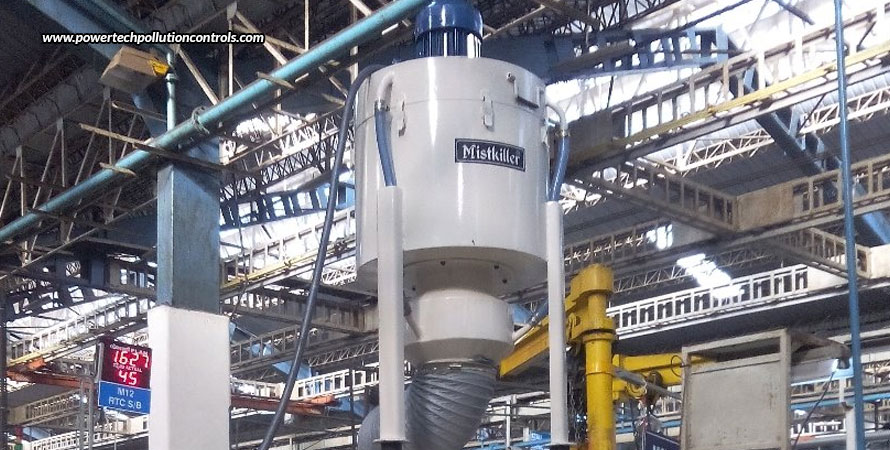
Selecting The Right Oil Mist Collector
Oil mist is a serious health and safety risk in industrial settings, produced during numerous machining and metalworking processes. It has minute oil particles dispersed in the air, which if left unchecked, can cause respiratory difficulties, poor air quality, and also fire hazards. Oil mist collectors are crucial pieces of equipment that efficiently capture and remove oil mist from the air, guaranteeing a secure and hygienic working environment, and help to reduce these dangers. But, this requires selecting the right mist collector for your workplace.
Understanding the precise needs and difficulties of the application is essential to choose the most suitable oil mist collector. The selection process heavily weighs elements including airflow capacity, filtration effectiveness, maintenance requirements, and adherence to industry standards. Customization and smooth interaction with current systems also guarantee top performance and effectiveness. In this blog below, we’ll examine the factors to take into account when choosing a mist collector, and discuss how important customization and integration are.
Considerations for selecting an oil mist collector
Airflow capacity
The effectiveness of a mist collector in capturing and eliminating oil mist is significantly influenced by its airflow capacity. The amount of air that is needed depends on how large the machining operation is, how many machines are running, and what kind of oil mist is produced. By calculating the total airflow required, it is possible to make sure that the selected mist collector can handle the air volume in the entire workspace.
Filtration efficiency
A mist collector’s capacity to collect and hold oil mist particles depends on how well it filters. To remove even the smallest oil droplets from the air, high-quality filtration systems with multi-stage filters are necessary. Efficiency ratings that measure a system’s performance are useful in determining how effective a filtration system is.
Energy efficiency
Oil mist collectors with low energy consumption have a minimal negative environmental impact. Look for units equipped with variable speed drives or intelligent control systems, which optimize energy usage by adjusting airflow based on demand.
Maintenance requirements
In order to maintain the mist collector’s peak functionality, routine maintenance is essential. Take into account how easily filters can be accessed, how often filters need to be replaced, and how much general maintenance is required. The use of a mist collector with easily replaceable filters and automated maintenance reminders makes maintenance jobs simpler and guarantees dependable performance.
Compliance with industry standards
When choosing a mist collector, adherence to industry norms and regulations is of utmost significance. Different standards may be applicable depending on the industry and area. Choosing a collector that satisfies or exceeds these requirements ensures a secure and legal workplace.
Customization and integration
Application-specific customization
Every machining process is different, and every application requires a different approach to oil mist control. With customization, you can be confident that the oil mist collector is made to specifically capture and get rid of the kinds of oil mist that are produced during the process. It is possible to build and install a collector that precisely meets the requirements of the application by collaborating closely with manufacturers and engineers.
Ductwork design and placement
Integrating the collector into the current system requires careful consideration of the design and position of the ducting. An ideal oil mist capture rate and effective air circulation are guaranteed by properly built ducting. To achieve maximum effectiveness, it is critical to take into account the location of inlet hoods and how close the oil mist source is to the collection.
Centralized or decentralized systems
Depending on the design and size of the workspace, one should choose between centralized and decentralized oil mist collection systems. A centralized system is more affordable and requires less upkeep because it uses a single large collector to service several devices. Decentralized systems, on the other hand, provide flexibility and are simpler to implement in smaller workspaces because each machine has its own individual collector.
By combining the considerations with the customization and integration tips mentioned above, industries can rightly select the most appropriate oil mist collector, and achieve optimal oil mist control, also promoting employee health and safety. So, whenever you’re looking for a mist collector, make sure to incorporate the above advice into your plan.


